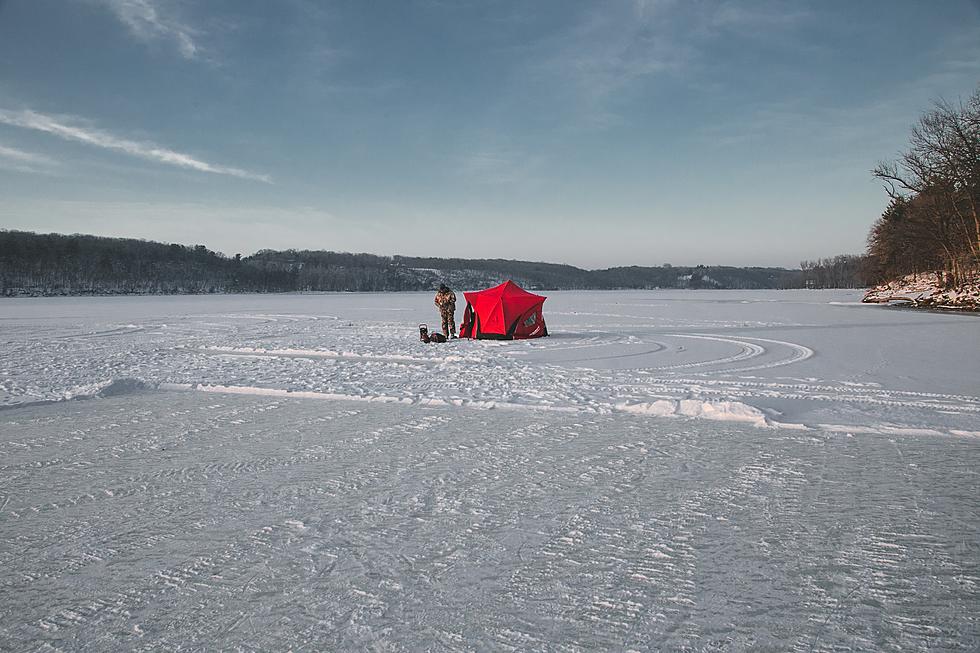As November comes to a close, some Minnesotans might be celebrating what has overall been a relatively warm month. Meanwhile, others are disappointed as they await the ice fishing, snowmobiling, and other winter activities season.
When it comes to activities like ice fishing, many anglers can remember years of enjoying early-ice fishing by Thanksgiving in Minnesota. This year will almost certainly not offer any early-season ice across Minnesota.
Just how abnormal is it that we don't have ice on lakes around the state yet? Are those years when people have been ice fishing by Thanksgiving more rare than you might think?
As almost anyone would guess, first ice depends greatly on what part of the state we're talking about and how big the lake is. Areas of Northern Minnesota - especially on smaller lakes - can see ice up to two weeks earlier than places in the southern part of the state.

This data, which is logged by the Minnesota DNR, does not account for ice thickness. It relies on a covering of ice observed across the entire lake. It doesn't mean it was necessarily safe to venture out onto. It just means the lake was observed to be covered.
While the DNR doesn't track ice-in & ice-out data for all lakes, they do keep track of many lakes across the state, including several major lakes that attract anglers.
READ MORE: These Are The Snowiest Cities & Towns In Minnesota
Here's a breakdown of some lakes across the Land of 10,000 Lakes that show the average ice-in dates, highlighting some of the earliest normal ice-in lakes and some of the latest normal ice-in lakes, along with some other popular fishing lakes:
Average ice-in dates for Minnesota lakes
- Devils (Otter Tail County): Average ice-in November 9
- Midge (Hubbard County): Average ice-in: November 12
- Colby (St. Louis County): Average ice-in November 13
- Stocking (Wadena County): Average ice-in November 14
- Clear (St. Louis County): Average ice-in November 15
- Lax (Lake County): Average ice-in November 17
- Caribou (Cook County): Average ice-in November 18
- Turtle (Beltrami County): Average ice-in November 21
- Clearwater (Itasca County): Average ice-in November 21
- Moosehead (Carlton County): Average ice-in November 21
- Ann (Kanabec County): Average ice-in November 21
- North Long (Crow Wing County): Average ice-in November 23
- Devil Track (Cook County): Average ice-in November 23
- Woman (Cass County): Average ice-in November 25
- Pelican (Pope County): Average ice-in November 25
- Vermilion (St. Louis County): Average ice-in November 26
- Lake of the Woods (Lake of the Woods County): Average ice-in November 26
- Fish Trap (Morrison County): Average ice-in November 27
- Miltona (Douglas County): Average ice-in November 30
- Waconia (Carver County): Average ice-in November 30
- Forest (Washington County): Average ice-in November 30
- Leech (Cass County): Average ice-in December 1
- Nokomis (Hennepin County): Average ice-in December 1
- Gull (Cass/Crow Wing County): Average ice-in December 1
- Mille Lacs (Mille Lacs/Aitkin County): Average ice-in December 3
- Lower Hay (Crow Wing County): Average ice-in December 4
- Bald Eagle (Ramsey County): Average ice-in December 6
- Big Birch (Todd County): Average ice-in December 6
- Minnetonka (Hennepin County): Average ice-in December 8
- Pepin (Winona/Wabasha County): Average ice-in December 8
- Kabekona (Hubbard County): Average ice-in December 9
- Cedar (Wright County): Average ice-in December 13
With colder weather coming for the end of the week, it isn't out of the question for some of the lakes toward the bottom part of this list to meet their average first-ice dates. Meanwhile, some lakes are already past that average first-ice date by days or even a week (or more in some cases).
Just remember: When your favorite lake does get a coating of ice across the whole body of water, be sure to check thickness before you venture out. While no ice should ever be considered safe ice, at least 4 inches of clear ice is recommended for walking out, with even more necessary for small vehicles like snowmobiles and ATVs.
While we're on the subject of ice fishing, here are some great reminders for the season ahead:
The 10 Commandments Of Ice Fishing In Minnesota & Wisconsin
Gallery Credit: Nick Cooper

